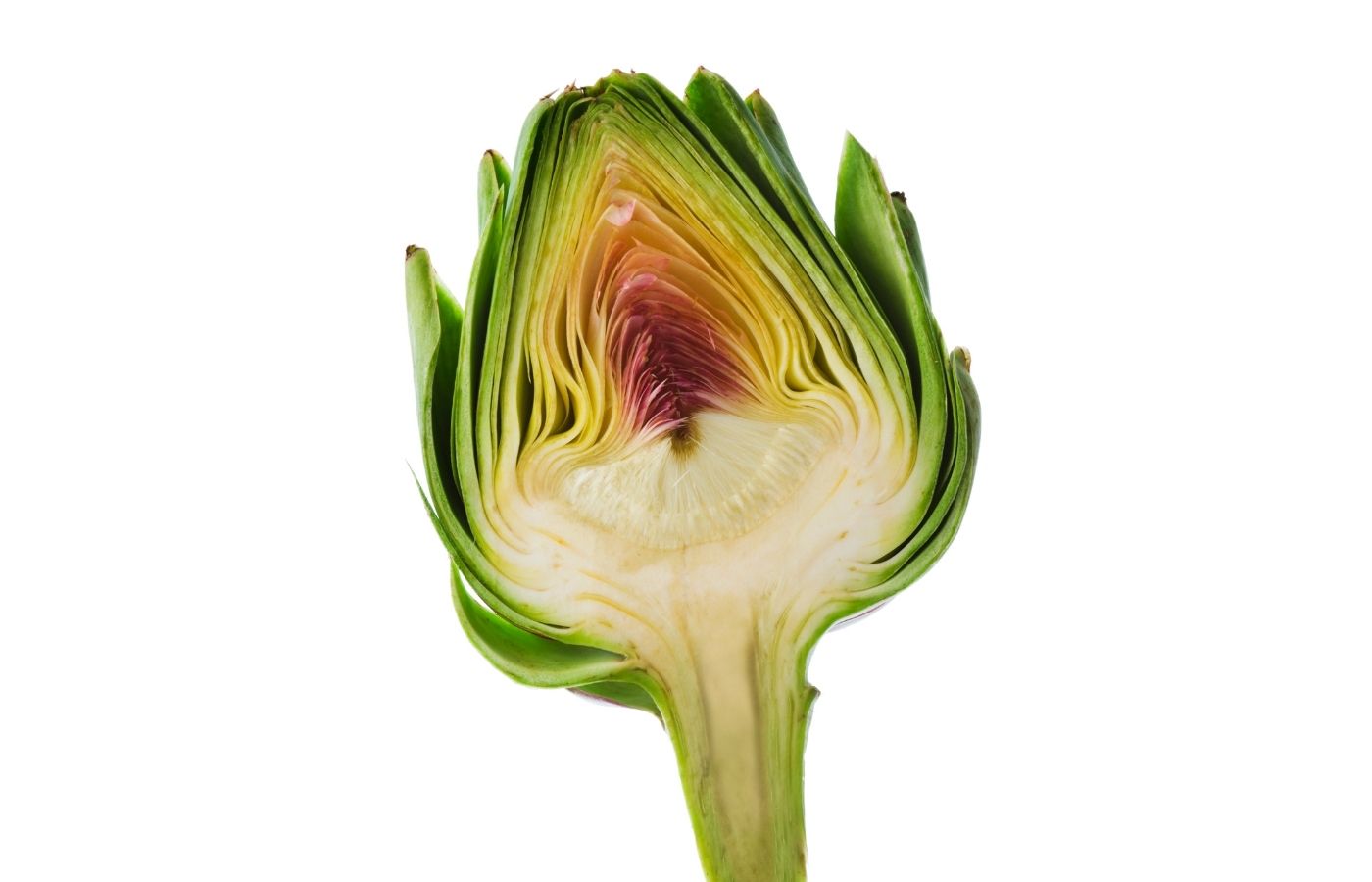Artichokes
Artichokes are large edible flower buds that are a part of the thistle family and if you are wondering how to prepare and use them in recipes, you are not alone! Learn all about artichokes by following our helpful information, from buying and storing artichokes to preparing, cooking, and freezing them as well as tips on how to eat them.
It may come as a surprise that artichokes are edible flower buds and are part of the thistle family. All parts of this vegetable are edible once cooked, except for the choke, which is the fuzzy section on the inside of the plant.
In our recipes, when we call for artichokes, we refer to Globe artichokes, known for their large, round flower buds. They are categorized by their size: jumbo artichokes are the buds from the top of the plant stock. Baby artichokes come from the smaller buds that are lower down.

Parts of an artichoke:
Petals – outer leaves, edible once cooked
Heart – meaty center, edible once cooked
Choke – fuzzy inner portion, not edible
Stem – long, sturdy portion at base of choke; edible raw and once cooked
Buying and storing artichokes:
Artichokes are available all year, but in North America, they are in season from March until May. Look for dark green, heavy vegetables, with tight petals that squeak when squeezed. Smaller artichokes tend to be more tender, and those with a rounder shape will have a larger heart. Avoid those with split leaves, heavy browning, or that look dry.
Artichokes are best when prepared the day they are bought but can be kept for up to 4 days. To store, place unwashed into a plastic bag.
Preparing artichokes:
- Rinse thoroughly under cold water.
- Remove lower leaves, and any that are small or off-colour.
- Remove stems close to the base with a sharp knife (these are edible – save them for later! See below for tips).
- Optional: remove the top portion, about ¼ of the vegetable. This removes most of the firm tips of the petals. This isn’t needed as they will soften after cooking.
- Add 1 tbsp of vinegar to 1 liter of water. Plunge the artichoke into the water once you are done prepping the vegetable. This stops the vegetable from turning brown once it has been cut.
Preparing stems:
- Cut off a small portion of the bottom end (about half an inch).
- Using a vegetable peeler, remove the outside layer.
- Either steam the whole stem or chop it up into small pieces. Raw stems can be used in salads, cooked stems are wonderful in spaghetti sauces or casseroles.
Cooking artichokes:
Cook’s Note: Consume only artichoke heart and tender portion of artichoke leaves; discard tough portion of leaves and fuzzy inner choke portion. Artichoke stem may be trimmed off and reserved for another use.
-
Boiling
- Fill saucepan or pot with 3-4 inches water, bring to a boil, place prepared artichoke into water.
- Cover, reduce heat to medium, boil gently for 25 minutes or until a petal near the centre can be easily removed.
- When finished, place artichoke upside down on a cooling rack to drain off water.
-
Microwaving
For one artichoke:
- Place prepared (as above) artichoke bottom down in a small microwave-safe dish and add ½ cup water, ½ teaspoon lemon juice, ½ teaspoon oil.
- Cover with plastic wrap and microwave on high for 6 – 7 minutes or until artichoke petal pulls out easily.
For additional artichokes:
- Place prepared artichokes in a microwave-safe dish.
- Add water, lemon juice, and oil as instructed above.
- Microwave on high for 7 – 10 minutes or until petal pulls out easily.
-
Steaming
- Put prepared artichoke on a rack above an inch or two of boiling water.
- Cover and steam for 20 to 40 minutes (depending on number and size).
- Artichokes are done when the petal pulls out easily.
-
Grilling
- Cut in half, remove the fuzzy center, brush with oil and grill until brown.
- Optional: Stuff center with a filling of choice (e.x. Curried Bread Crumbs).
-
Pressure Cooking
5 medium artichokes, trimmed
1 cup water
Salt and freshly ground pepper
1/4 cup salted butter, melted
- Place artichokes and water in a 6-quart pressure cooker. Bring to a boil over high heat. Cover with lid and lock it in place. Bring to high pressure over high heat, adjusting.
- Cook for 10 minutes, adjusting heat as needed to maintain high pressure.
- Carefully remove from heat. Keeping a safe distance or using a wooden spoon, quickly release pressure according to manufacturer’s instructions. Artichokes are done when outer leaves are easily removed with a fork. Transfer artichokes to a plate and cool slightly. Season to taste with salt and pepper.
- Serve with melted butter for dipping.
Freezing artichokes:
Before freezing, partially cook the artichoke by blanching or steaming to deactivate enzymes that turn the vegetable brown (artichokes frozen from raw will turn brown when thawed because colour-changing enzymes have not been deactivated).
How to eat an artichoke:
Petals: Dip individual petals into sauce or melted butter; pull through teeth to remove soft, portion of petal and throw the rest away.
Heart: Remove fuzzy choke. The heart can be cut into small pieces and dipped into sauce or use in any recipe that calls for artichoke hearts.
Try eating with one of these sauces:
-
EasyGreen Goddess Yogurt Dressing
Originating in California, this popular homemade dressing is named for its light green colour. Serve this delicious dressing on your next garden vegetable salad – you won’t be disappointed!
-
MediumHollandaise Sauce
Hollandaise sauce is best made fresh and used immediately. Serve this classic sauce with poached eggs, fresh asparagus, boiled potatoes or with anything else that could use a touch of richness.